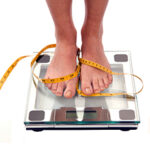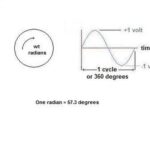There are many ways one can measure the percentage of body fat composition; however, reliability and accuracy vary, as does the expense and time requirements. This article looks at the various methods of measuring body composition, how the methods work, and the pros and cons of each.
Bioelectric Impedance
The bioelectric impedance method works by measuring the speed of a low electrical current as it passes through the body, since fat is resistant to the flow of electrical current, higher amounts of body fat composition will resist the flow of the current. This method is easy, fast, and inexpensive; scales that use the bioelectric impedance method can be purchased at a local store such as Target or Walmart; it is also available at many gyms and health clubs. This method can be inaccurate if water balances are low such as during dehydration or following heavy exercise; also, the stomach and bladder need to be empty.
Skinfold Thickness
Calipers are used to pinch the subcutaneous (fat that lies under the skin and over the muscles) fat at several locations such as the back of the arm, abdominals, and thighs. This method is presuming that the amount of subcutaneous fat is in direct proportions to the total body fat. This method is fast and inexpensive, and it is fairly easy, provided the user is trained in the use of calipers; it can be inaccurate if the person performing the skinfold thickness test is not properly trained. This method can usually be obtained through doctors, personal trainers, and some gyms.
Underwater Weighing
The underwater weighing method uses the difference between land weight and weight underwater to figure out body density: the premise is the denser you are, the less fat you have. This method is accurate, but does have its limitations. It cannot be used for anyone who is ill, anyone whose health is frail, or anyone who cannot hold breath for a determined period of time and it cannot be used for children.
Air Displacement (otherwise known as the Bod Pod)
The air displacement method places an individual into a closed chamber and measures the air displacement to calculate body density: its premise is the denser you are, the less fat you have. This method is accurate and easier on the test subject than the underwater weighing method, but it is expensive and availability may be an issue.
Dilution
The dilution method is typically injected, but can occasionally be ingested depending on the testing site’s method of use, it measures the concentration of a water-soluble substance (what has been injected) in the bloodstream: its premise is the more of the substance that has mixed with (diluted) the body’s water, the less body fat and greater amount of lean tissue is present. This method is accurate; it is expensive; it is invasive; and it may involve radioactive substances.
Dual-energy X-ray Absorptiometry (DEXA)
The Dual-energy X-ray Absorptiometry or DEXA uses X-rays to measure body composition. One X-ray can accurately measure bone mineral mass, total body mass, and total percentage of body fat. DEXA is accurate, but very expensive. It requires the individual to lie still for the length of the X-ray and it does not differentiate between visceral fat and subcutaneous fat.
Computerized Tomography (CT)
Computerized tomography uses X-rays to literally visualize the amount of fat and lean tissues. This method is useful for measuring the total amount of visceral fat and subcutaneous fat, but it is very expensive.
Magnetic Resonance Imaging (MRI)
The Magnetic Resonance Imaging method or MRI uses magnetic fields to create an image of the internal body. It is highly accurate; it measures visceral fat; and it is expensive, but easier to access than some of the other more accurate methods.
References
Grosvenor, M. B., & Smolin, L. A. (2006). Nutrition: Everyday choices. New Jersey: John Wiley & Sons, Inc.




